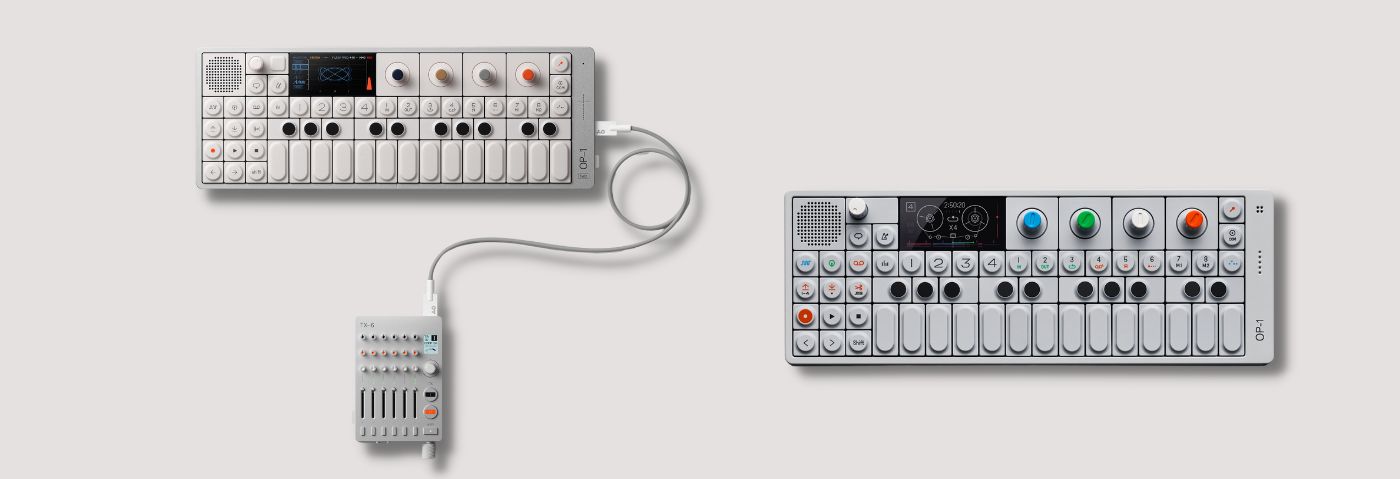In a recent article, we posed the question “Does Hardware Still Shape Genres”? To continue on the theme, it’s been ten years since Teenage Engineering released the OP-1. Now discontinued but with it’s spiritual successor the OP-1 Field in place, perhaps its legacy needs to be reviewed. Since the OP-1’s debut, we’ve seen a positive tsunami of small, ultra-portable FM machines. Was it the trigger for a new generation of FM musicians hooked to the FM sound? If it’s the sound for you, in this Hardware Focus, we show you how to use the OP-1 for powerful FM synthesis.
Emerging in the late 1970s, FM (frequency modulation) synthesis quickly became the “go-to” studio stalwart, and it stayed so until the end of 1980s. Despite being notorious for an unfathomable programming methodology, FM synthesis never lost its allure. Thirty years later, Teenage Engineering released the OP-1. After just ten years it’s been discontinued and its spiritual successor, the OP-1 Field, put in place. With the benefit of hindsight, did Teenage Engineering release the ultimate FM hero?
Before we dig in, a quick bit of history. Through subsequent overuse of a number of presets, FMs unique sonic signature (a technological blend of glassy, fragile highs, punchy mid-range and surprisingly deep pads and washes) faded away until the end of the 2000s when new FM hardware & software started to hit the market, a collective attempt to right the wrongs of the past and make FM accessible and relevant for today.
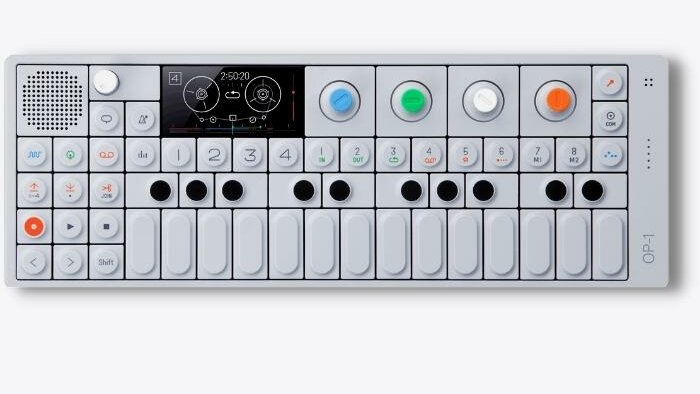
It’s not often discussed as such but one of the earliest exponents in this redux of FMs legacy was the much loved/hated OP-1. And now its successor, the OP-1 Field, takes on the baton.
Overflowing with deliberate contrarianism, the original little white box offered FM amongst its roster of 11 synth engines at a time when virtual analogue was the flavour of the month.
Indeed, the FM engine was the first to be developed, (the source code stating ©2009) the reason being, as Teenage Engineering co-founder David Möllerstedt puts it‚ “it seemed to make sense to present a fully digital synthesis type on a resolutely digital machine.”
It’s difficult to prove but my theory is that via the success of dedicated FM users (I am thinking of unapologetic DX7 enthusiast Stuart Price (Les Rhythm Digitales, Zoot Woman) as one example), the distinctive sound started to feed back into independent music in the late 1990s, arguably emerging with its own genre in synthwave.
With such a market to tap, it is unsurprising that a leftfield music tech firm, such as TE, would make new hardware FM instruments. Moreover, the positive tsunami of small, ultra-portable FM machines released since that time suggests that the OP-1 had a certain influence beyond just sound-making. The pure availability of FM today has inevitably turned on a new generation of musicians to the FM sound – perhaps a reason why we hear its influence everywhere in “popular” music today.
it seemed to make sense to present a fully digital synthesis type on a resolutely digital machine.
Technique
Fundamental to FM on the OP-1 platform is its four operator* system, self-contained little synth units which are connected either to other operators or directly to the output, the routing being adjustable by nine configurations or algorithms**, which together cover the fundamental FM timbres – piano, strings, organ, percussion, bass, synth pads, and, if you like, some rather pleasing abstract noises.
For those unfamiliar with the OP-1 UX, the FM engine is initiated by pressing the synth button on the far left of the unit’s facia. The buttons marked 1 to 8 (using a small font), to the right of the buttons marked 1 to 4 (in a larger font) are the 8 slots available for synth patches which, on a factory-fresh unit, are already loaded.
Pressing any of the buttons marked 1 to 8, simultaneously with the shift button, accesses the synth engine menu. Turning the blue knob toggles the synth engines and allows for the selection of FM. Turning the beige knob toggles the available presets, a comprehensive overview of the OP-1s FM capabilities but, if we were to be critical, they are all of a type. As with many machines across its history FM is capable of a lot more than the presets suggest, and so it is here.
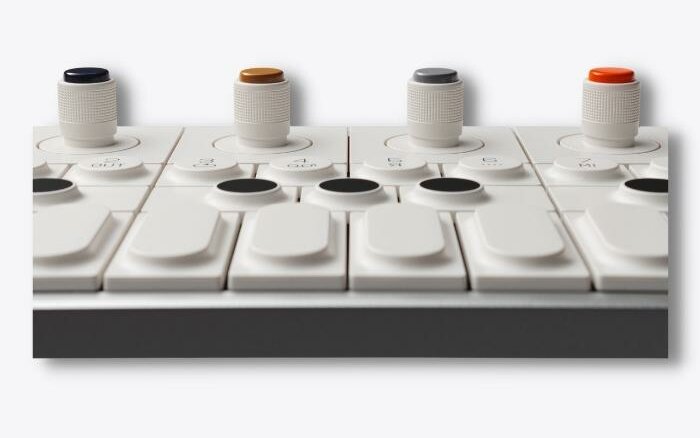
Confusion
Given its trademark UI, it would be easy to think that the Field maps an operator per encoder, but proceedings are a little more complex than that. When you start setting about making a new sound the OLED display provides the only interpretation.
The FM engine is represented visually by four isometric wireframe cubes, one being B, for Base frequency, and the rest showing fractions or decimal numbers which stand for all other operator frequencies, or relative pitches, being either a ratio (1/2, 1/4, 3/8, etc.) or a multiple (2, 3.5, 4, etc.) of this base frequency. These alphanumerics are displayed in a colour corresponding with one of the encoders.
Movement
Blue encoder = FM intensity
Blue controls the level of each of the non-Base operators, i.e. modulation depth if an operator is a modulator or volume if the operator is a carrier. The levels are represented on the OLED as increasingly bright blue outlines around the cubes. Setting the encoder CCW to its minimum value will bring the level of all other non-Base operators to 0, regardless of where their encoders are pointing.
At this point, you will hear something very similar to a pure sine tone. This is the Base frequency which, using the ‘snapshot’ functionality, can be saved as an approximation of what other instruments would call an ‘init’ patch for use as the foundation of new sounds.
Turning blue CW, the modulation depth increases, introducing higher frequencies, and rounding out the sound by increases in intensity and sharpness. At the maximum CW setting an aggressive, noisy tone is produced, although the overall flavour will vary according to the values of the other parameters.

Beige encoder = frequency
The Beige control determines the relative frequencies of each operator which it does by presenting ‘sets’ which each define three values: the frequencies of the green, white, and orange operators, each relative to the Base frequency.
Starting at the minimum CCW setting and turning CW, the green operator’s frequency increases, spanning 8 different values: 1/64, 3/32, 1/8, 5/16, 1/2, 5/8, 1, and 2. For each of these green frequencies, the white operator has its own range of 8 frequencies, which decrease with the encoder movement: 2, 1.5, 1, 1/2, 3/4, 1/4, 5/32, & 1/32. Finally, for each white value, there are another 8 frequencies for the orange operator that appear as a more randomised sequence: 1/16, 2, 5/8, 4, 1.75, 7/16, 3.5, & 1
Each movement of the encoder registers a change in the orange frequency whereas the white operator changes after orange has cycled through its range for the particular value associated to white. Similarly, the green operator changes after white has cycled through its range for each value of green.
While there is clearly a numerical pattern in the frequency sets this doesn’t translate to any particular timbre. The sound varies wildly, from harmonic to discordant, even between adjacent values.
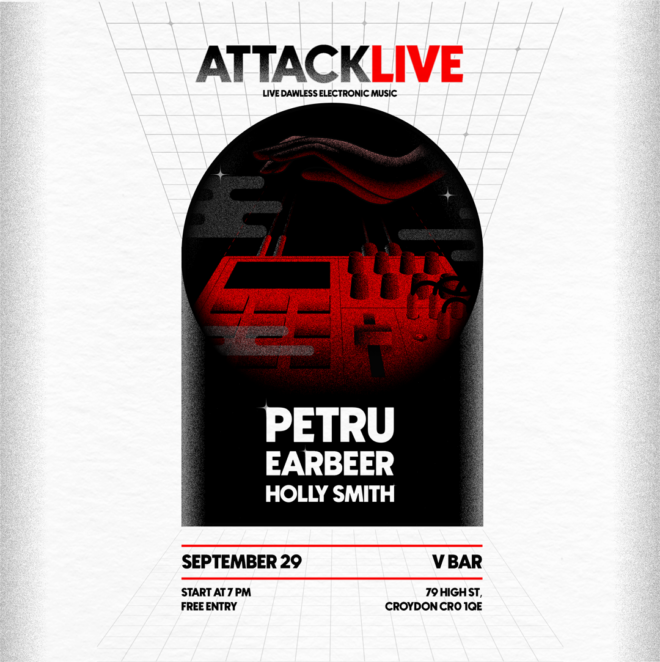
Grey encoder = topology
The grey knob controls the algorithm selection. On the OLED readout the arrangement of the cubes indicates their current function. Operators who have no neighbour below or at the side are carriers or the ‘output’ operators, which produce the audible sound due to their frequencies being above audio rate. Operators in the middle of the graphic are modulators or carriers.
A useful starting point is to note that in the extreme CCW setting all the cubes appear diagonally adjacent in a left-to-right order. The operators are now in a serial configuration (orange>white>green>B), the upper-left cube being the modulator, the bottom right, the carrier.
The parallel CW configuration arranges the cubes diagonally adjacent right-to-left (B>green>white>orange). Here the carriers and modulators are mixed and all four operators are being sent to the output directly without modulation. In both configurations, the sound is practically identical.
The volume of the Base operator will vary according to the topology; when there is more than one ‘output’ operator, the level of B is reduced. This is apparent when Blue is turned fully CCW and the engine is generating a pure sine tone. It is only when the colour of the FM is upped to around 10 notches that any discernible changes in the colour of the sound will be heard when switching algorithms.
Orange encoder = detune
This final parameter is the most obvious and can be used to create extreme inharmonic sounds or to introduce movement. Visually, the Detune amount is shown by the B and white cube being increasingly offset to the right, the latter more than the former, while the green and orange cube are offset to the left where, again, the latter has a greater amount of movement than the former.
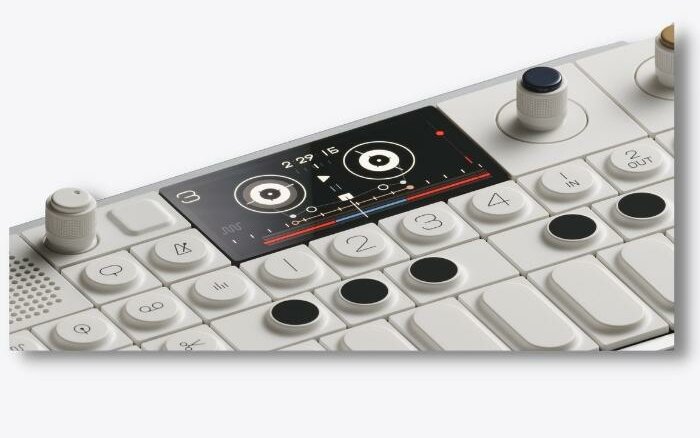
Substance
The Field differs from earlier and later incarnations of FM through its provision of
pre-determined frequency sets. It is therefore absolutely not a ‘free-range’ function generator. That said, even with 2 fewer operators than the unofficial industry standard of 6, and its 9 algorithms, the final conclusion cannot be to say that the Field is lacking.
It is well documented that it was a deliberate design decision on the part of the Teenage engineers to create in the OG, and now the Field, an instrument with in-built limitations, a Utopian move that was aimed purely at unlocking its users’ inherent creativity.
Overflowing with deliberate contrarianism, the original little white box offered FM amongst its roster of 11 synth engines at a time when virtual analog was the flavour of the month.
The FM engine probably illustrates that intention more completely than any of the other available synth models. The OP-1s successful innovation, which arguably inspired all the machines that followed it, was to demonstrate that by creating a deficit in features, it is possible, by careful attention to UX detail, to credit the user with huge ‘pick up and play’ value.
In pure FM terms, through the Field and the OG, the user is freed from the double-edged sword that is this mode of synthesis, namely the risk of being bogged down by too many possibilities or finding that you need for a PhD in Acoustics before you can actually make a sound.
Purchase the OP-1 Field here and the original OP-1 here.
While you’re here:
If you like FM Synthesis you may enjoy Attack Live! It’s free to come, in London on Sept 29th. Sign up for the guestlist by filling out the form below.
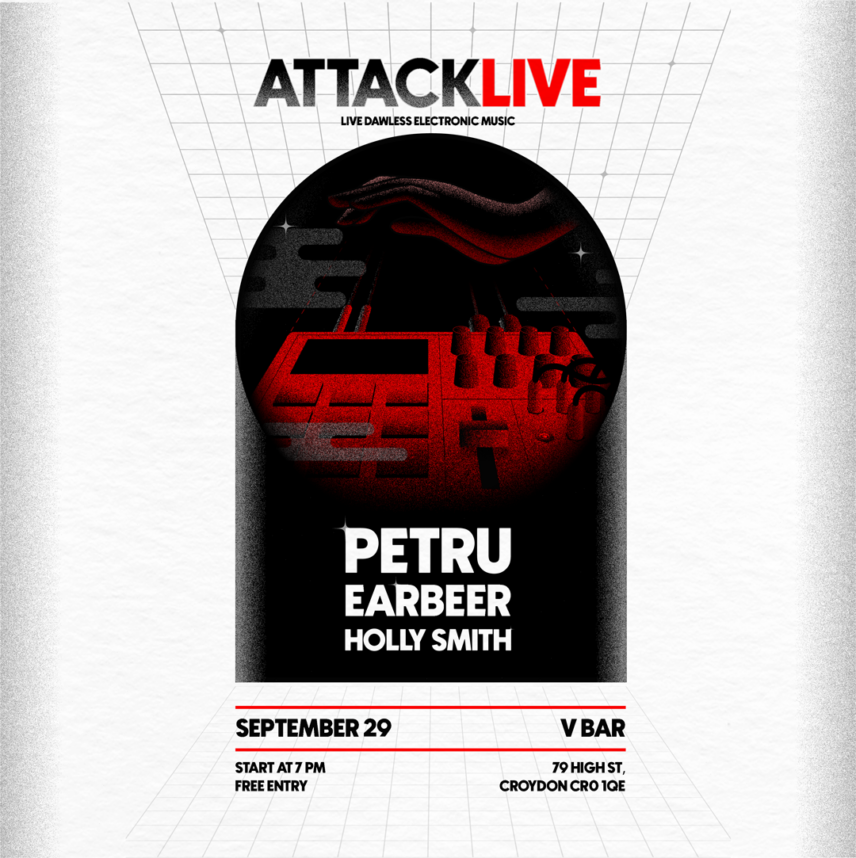
*Attack Magazine is supported by its audience. When you purchase through links on our site, we may earn an affiliate commission. Learn more.
